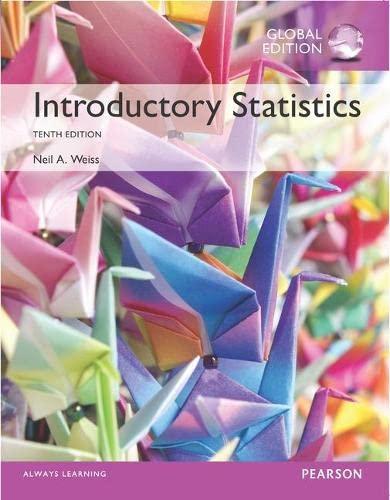Death Rolls. Alligators perform a spinning maneuver, referred to as a death roll, to subdue their prey.
Question:
Death Rolls. Alligators perform a spinning maneuver, referred to as a “death roll”, to subdue their prey. Videos were taken of juvenile alligators performing this maneuver in a study for the article “Death Roll of the Alligator, Mechanics of Twist and Feeding in Water” (Journal of Experimental Biology, Vol. 210, pp. 2811–2818)
by F. Fish et al. One of the variables measured was the degree of the angle between the body and head of the alligator while performing the roll. A sample of 20 rolls yielded the following data, in degrees. 58.6 58.7 57.3 54.5 52.9 59.5 29.4 43.4 31.8 52.3 42.7 34.8 39.2 61.3 60.4 51.5 42.8 57.5 43.6 47.6
a. Do the data provide sufficient evidence to conclude that, on average, the angle between the body and head of an alligator during a death roll is greater than 45◦? Perform a Wilcoxon signed-rank test at the 5% significance level.
b. The hypothesis test considered in part
(a) was done in Exercise 9.115 with a t-test. The assumption in that exercise is that the angle between the body and head of an alligator during a death roll is (approximately) normally distributed. If that is the case, why is it permissible to perform a Wilcoxon signed-rank test for the mean angle between the body and head of an alligator during a death roll?
Step by Step Answer:






